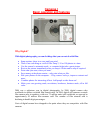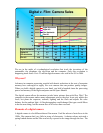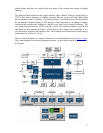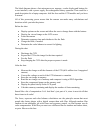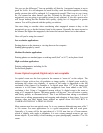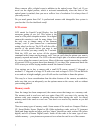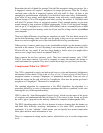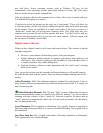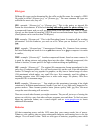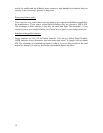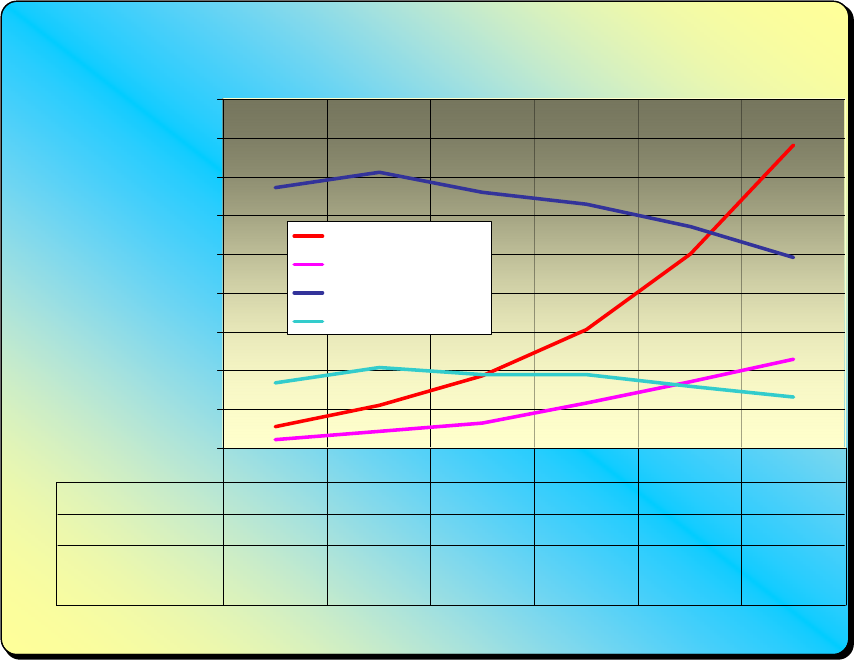
1
Digital v. Film: Camera Sales
0
10
20
30
40
50
60
70
80
90
Year
Units, Millions
Digital Worldwide
Digital US
Film Worldwide
Film US
Digital Worldwide
5.5 11 18.5 30.5 50 78
Digital US
2 4.3 6.5 11.5 17 23
Film Worldwide
67 71 66 63 57 49
Film US
16.820.619191613
1999 2000 2001 2002 2003 2004
We are in the midst of a technological revolution that rivals the inventions of the
automobile, the telephone, the television and the computer. Only this revolution is
happening much faster. Over 23 million digital cameras were sold in the US in 2004.
Why now?
Advances in computer processing coupled with drastic reductions in the cost of computer
memory have converged to supply low cost cameras that can produce quality images.
When you hold a digital camera in your hand, you hold a hundred times the processing
power and memory of the flight computers on the Space Shuttle!
The digital camera allows the amateur to take better pictures than with film. Why? The
computer in the camera makes many adjustments prior to the shot. It not only adjusts the
focus, but plans the exposure, contrast, lighting and the flash and adjusts the color
balance for the ambient light. A film photographer would change film types or add filters
to do the same thing; but the camera does it all in less than a second.
Elements of a digital camera
A digital camera is a lot different than a film camera. Until the advent of auto-focus in the
1980s, film cameras had very little in terms of electronics. A shutter release activated a
spring loaded shutter and the film was briefly exposed to the image through the lens. The



